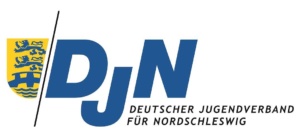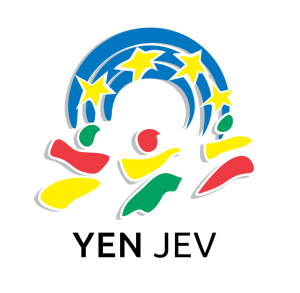Deutscher Jugendverband für Nordschleswig – DJN (Germans in Denmark)

address: Vestergade 30
place: DK-6200 Aabenraa
phone: +45 746 23833
e-mail: info@djfn.dk
website: http://www.djfn.dk
Organization
The German youth organisation of Nordslesvig (Deutscher Jugendverband für Nordschleswig/DJN) is the youth organisation of the German minority in Denmark. We stand for the needs and interests from nearly 1.800 members in 20 member organisations. Members of the youth organisation are sports clubs, hobby clubs, a youth counsel and a marching band.
The German youth organisation of Nordslesvig represents it selves as promoter and initiator of youth work in all subjects. The primary target group are the kids and young people from the German minority in Denmark. In addition, the youth organisation works as bridge builder between children and young people in Denmark and Germany.
The youth organisation is member of different supra-regional and international committees and organisations, like for example in the Landesjugendring Schleswig-Holstein and the Youth of European Nationalities. Furthermore the organisation serves as the carrier of the Bildungsstätte Knivsberg, which offers an extensive range to the members of the German minority, but also the big population in whole Germany and Denmark.
Currently there are four sports teacher employed in the youth organisation, who achieves active trainer and supportive work. From september 2015, the youth organisation hired a club consultant, who takes care of the superordinate needs from the clubs and member organisations.
Minority
German minority in Denmark (South-Jutland).
Settlement area
The central area is located in the southern part of North-Slesvig mainly at the towns of Tøndern/Tonder, Apenrade/Åabenrå, Sonderburg/Sønderborg, Hadersleben/ Haderslev, as well as the villages of Hoyer/Hojer and Lügumkloster/Logumkloster and the station town of Tingleff/Tinglev.
History
The dukedom Slesvig was established in the 12th century and belonged to the kingdom of Denmark until 1864. For 400 years the Danes and Germans lived peacefully together in the State of Denmark, to which the dukedom Slesvig and Holstein belonged aside from todays Denmark and Norway. As a result of the Napoleonic Wars, the State of Denmark fell apart, and Slesvig became a point of discord between the Danes and the Prussians. The German minority has existed since 1920. After Germany lost World War I, a plebiscite took place in the former dukedom of Slesvig. The voting area was devided into three regions. The northern third voted for integration into Denmark, the middle third to remain in the German Reich and in the southern third, the vote did not take place. Because of the three voting areas, the German population became clearly disadvantaged. As a result, they organized themselves in to German groups with the aim of a revision of the borderline, which did not improve relations between Danes and Germans. Nevertheless, one took part in the political life in Denmark and sent pastor Schmidt- Wodder, one of the leading heads, as representative to the Danish Folketing (parliament). In the frontier area, German schools and institutions were founded. The ideas of national socialism captured the attention of a great part of the German ethnic group. 1938 all German organisations in North Slesvig were coordinated. Regardless of the prosecution which affected large part of the German ethnic group (a greater part of the property of the German minority in North Slesvig had been confiscated by the state of Denmark) a new start succeded in November of 1945. Based on the principles formulated by a circle of German citizens living in Hardersleben which put an end to the claims of a revision of the borderline by the German minority and confessed loyality to the state of Denmark, the “Bund deutscher Nordschleswiger” – BdN“ (Alliance of German North Slesvians) was founded on the 22nd of November, 1945. With the Bonn-Copenhagen declarations in 1955 in which the rights of the minorities of both sides of the border were settled, a process of détente began which led to today’s neighbourly relations. From 1953 to 1964 the ethnic group was represented by its own deputy in the Folketing, and from 1973 to 1979 by an election alliance of the central democrats. After this time, independant representation was no longer possible. At first, a contact committee to the parliament and the government was established, and since 1983 the secretariate of the German ethnic group has existed in Copenhagen.
Political Situation
The German language has no large presence in the public sector, it is not used in documents or in court. In order to work in the public service one need to be able to speak German. The “Bund deutscher Nordschleswiger“ (Alliance of North Slesvig) is the main organisation of the ethnic group. It is divided into 13 district- and 23 local branches with a total of 4000 members. The aims of the “Bund deutscher Nordschleswiger“ are the promotion of the ethnic group in North Slesvig and a harmonic development in the German-Danish Borderland. The association represents the interests of the German ethnic group to the government and parliament in Denmark and Germany, as well as to the authorities and the general public. The “Bund deutscher Nordschleswiger“ and its central office is also responsible for the financial budget of the German ethnic group. The political representation of the minority is exercised by the “Schleswigsche Partei (SP, Slesvig Party)“. It works closely together with other associations and organisations of the minority on all levels. The SP is freed from the 2% lock-barrier. Since the beginning of the Eighties, the SP has not been represented in the Folketing (the Danish parliament). A secretariate has been established to represent the minority in Copenhagen. The SP has a seat in the Amtsrat (political management of the region North Slesvig) und is represented in many municipal councils.
Culture
An essential part of the cultural work goes into the German libraries. The Association of German Libraries runs 5 public libraries, and, in cooperation with rural schools, 16 village libraries and 3 library-busses. The association has aproximately 150.000 books mostly in German. The “Nordschleswigsche Musikvereinigung“ ( North Slesvig music association) gives one to two large choir concerts annual.The study group of local history and geography of North Slesvig publishes one out of two volumes yearly on this matter, conducts local- and regional historical excursions, and maintains the archive of the German ethnic group in Apenrade/Åpenrå. The association “Haus für deutsche Kultur und Geschichte in Nordschleswig“ (House for German Culture and History in North Slesvig) maintains a museum of history and characteristics of the German population which is in its initial stages.
Education
The German ethnic group has its own educational system, for which the “Deutsche Schulund Sprachverein“ (German Association for School and Language) is responsible. In 18 public schools about 1200 pupils are taught, and 24 nursery schools care for 600 children. In recent years the number of pupils at these schools has increased. In the German education system there is also a secondary school from which the “school leaving examination” (Abitur) is recognized in Denmark and in Germany. The German schools work on the basis of the Danish private school law and are supported analogously, while most nursery schools are supported by the communities. The education in the German schools of North Slesvig is bilingual.
Media
The “Nordschleswiger“ is the only newspaper in the German language in Skandinavia. It is at the same time the organ of the German ethnic group and an important link for the minority. The editor of the paper is the BdN, and the owner is the “Deutsche Presseverein“ (German Press Association). The paper has appeared as a weekly since 1946 and as a daily since 1951. Its circulation is about 4.000. The publishing house and main editorial office are in Aabenraa, but there are some local offices. There are no German-speaking radio or television stations in Denmark, but the reception of German stations is possible. It is possible that the minority express its viewpoints from time to time in the German and Danish radio and television. Furthermore, the ethnic group has the possibility to announce its events at some local radio-stations.
Economy
The region is characterized by the nearness of the German border. There are many carriers. At Alsen, “DANFOSS“ is established as one of the largest Danish industrial enterprises. Otherwise, the labour market is characterized by small and medium-sized agricultural-, service- and industrial enterprises. The lack of industry was recognized early on. A council of economy (Erwerbsrat) tried to attract new industries. The German minority welcomes the initiative which helps to decrease the handicap of the borderland Nord-Slesvig. German farmers are organized in the “Landwirtschaftlichen Hauptverein für Nordschleswig“ (Agricultural Main Association for North Slesvig), with 1.400 members.
Sports
The “Nordschleswigsche Ruderverband“ (North Slesvig Rowing Federation) is a pool of 7 German rowing-clubs whose members take active part in regattas and sporting events in Denmark und Germany. It arranges courses, tours and camps, and participates in competetive, high-performance sports and amateur sports. The organisation maintains 6 club-houses and a boat-house. In the field of sports hand-ball particularly deserves mention.
Financial situation
In the German-Danish border area there is mutual financing of the minorities. The German ethnic group in North Slesvig is supported by the Federal Republic of Germany and the Federal State Slesvig-Holstein; the Danish ethnic group is supported by the State of Denmark. The mutual financing of the minorities fits into German-Danish minority-patterns. The important coordination of the budget is settled by the Committee for Questions of the German Ethnic Group in North Slesvig within the Federal State Parliament of Slesvig-Holstein. This means that practically all associations and unions are directly or indirectly supported by the Federal Republic of Germany and by the Federal State Slesvig-Holstein. The associations and unions receive approximately the same financing as the equivalent Danish institutions.
